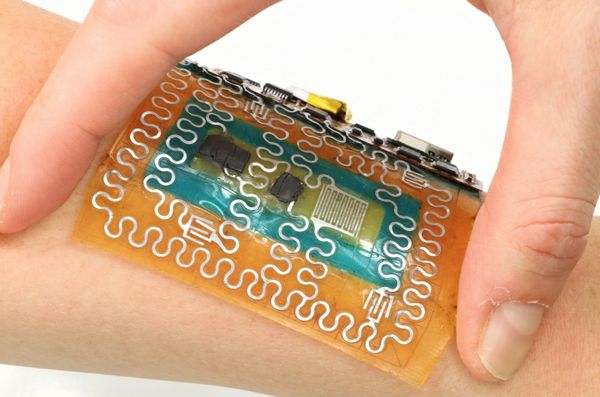
Researchers in Linz published an article in the scientific journal "Nature Materials" introducing an elastic material made out of a non-polluting mix of gelatin and other edible ingredients. What is so special about the new bio-gel? It is elastic, flexible and easy to bend as well as sufficiently stable, allowing it to be combined with electronic components. This discovery forges new paths in the development of soft robotics.
To date, the demands for materials used in the field of soft robotics, stretchable electronics, or for new types of medical applications, could only be met by using materials made out of fossil raw materials. The study's first authors, Melanie Baumgartner, Florian Hartmann, and Martin Kaltenbrunner (department of Soft Matter Physics and the "LIT Soft Materials Lab" at the JKU), and their team have aimed to develop a biological alternative. In lieu of increasing amounts of waste associated with electronic devices, scientists say that sustainability in the field of technical development is now "one of the greatest challenges of our time".
When applying so-called soft robotics, researchers take all areas of healthcare, rehabilitation and medicine into account, focusing on where technology comes into direct contact with the human body, for example, when bodily functions are monitored using portable sensors. Enormous potential would include rubber-like materials considered to be biocompatible, meaning non-toxic. At the same time, the carrier material’s elastic properties used in the new technology should not be fragile and deteriorate over time.
Mixture of Gelatin, Solvents and Some Sugars
The scientists have created the gel using a mixture of gelatin, solvents and various types of sugar, enabling them to achieve results that otherwise only silicone elastomers can provide. Another advantage is that the gel created in Linz can be disposed of in the organic waste bin after use. The material also contains water and can therefore interact with other water-soluble materials, but in the presence of other liquids, there is hardly any change. This makes bio-gel a promising carrier for electronic analysis devices intended to be attached directly on to the skin surface and would also not restrict the patient’s mobility.
In the field of robotics research, the research team built an artificial elephant's trunk in which the electrical exoskeleton can be moved back and forth hundreds of thousands of times without breaking. Scientists believes the gel’s potential use ranges from making children's toys safer and technical support for medical rehabilitation to gripping hands that could be used, for example, in harvesting robots; these can be disposed of without hesitation after use.
According to the scientists, the material can be made through a simple processing procedure at low production costs. Industrial production methods will make the material even more resilient and subsequently, "more complex robots with sensor skins" can to be developed on this basis.


